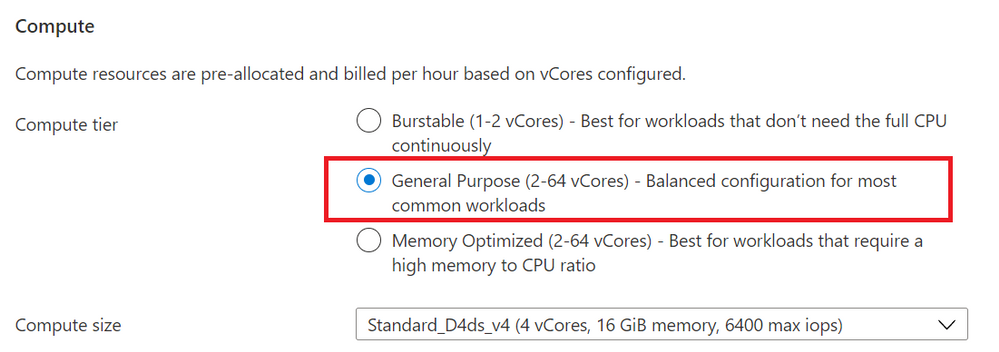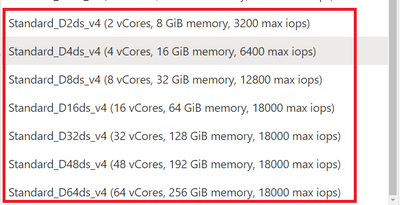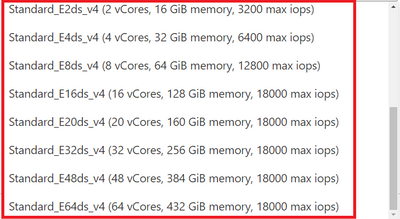
by Contributed | Oct 15, 2021 | Technology
This article is contributed. See the original author and article here.
Microsoft Viva Topics brings knowledge to workers in the apps they use every day. We’re continuing to build new capabilities for Viva Topics. Our most recent update is integration with Yammer.

Yammer integration
Yammer is integrating with and adopting Viva Topics to make community-sourced knowledge easily accessible across an organization and support a consistent experience in Microsoft 365. Among others, this provides the following benefits for an organization:
- Topics will mean and refer to the same subject – whether in Yammer, Viva Topics, or elsewhere in Microsoft 365.
- Premium Viva Topics experiences like topic cards will show in Yammer.
- Premium Viva Topics experiences like pages and cards will include content from Yammer such as questions and answers, and conversations.
- Topics can be managed centrally.
- Permissions can be managed for who gets to create or edit topics.
Users with the appropriate licensing will see topics in Yammer enhanced with Viva Topics experiences, such as topic cards, while unlicensed users can continue to use topics in Yammer the way they are used to. Only Yammer networks in Native Mode networks are eligible for the premium Viva Topics experiences. Learn more about the Yammer Topic API changes in this article.
We’ll continue to expand Microsoft Viva’s capabilities. Keep an eye out for new blog posts or register for our newsletter to stay up to date on the latest feature releases.
by Contributed | Oct 14, 2021 | Technology
This article is contributed. See the original author and article here.
We’re happy to announce the addition of the Azure Cosmos DB Developer Specialty certification to our portfolio, to be released in mid-November 2021.
This new certification is a key step for developers who are ready to prove their expertise supporting their organization’s business goals with modern cloud apps. IT environments where application infrastructure is dated, rigorous, and specialized often cost developers valuable time and resources. Business-critical modern apps require scale, speed, and guaranteed availability, and they need to store ever-increasing volumes of data—all while delivering real-time customer access. Developers who work with Azure Cosmos DB find the tools and security they need to meet these requirements and more to meet today’s business challenges.
Is the Azure Cosmos DB Developer Specialty certification right for you?
You’re a great candidate for the Azure Cosmos DB Developer Specialty certification if you have subject matter expertise designing, implementing, and monitoring cloud-native applications that store and manage data.
Typical responsibilities for developers in this role include designing and implementing data models and data distribution, loading data into a database created with Azure Cosmos DB, and optimizing and maintaining the solution. These professionals integrate the solution with other Azure services. They also design, implement, and monitor solutions that consider security, availability, resilience, and performance requirements.
Professionals in this role have experience developing apps for Azure and working with Azure Cosmos DB database technologies. They should be proficient at developing applications by using the Core (SQL) API and SDKs, writing efficient queries and creating appropriate index policies, provisioning and managing resources in Azure, and creating server-side objects with JavaScript. They should also be able to interpret JSON, read C# or Java code, and use PowerShell.
Developers interested in earning this new certification need to pass Exam DP-420: Designing and Implementing Cloud-Native Applications Using Microsoft Azure Cosmos DB, which will be available in mid-November 2021. If you’re a skilled Azure developer who has experience with Azure Cosmos DB, we encourage you to participate in the beta. Stay tuned for the announcement.
Start preparing now for the upcoming beta exam
Even though the exam won’t be released until November 2021, you can start preparing for it now:
Unlock opportunities with Azure Cosmos DB
Are you ready to take your skills to the next level with Azure Cosmos DB? Get ready for Exam DP-420 (beta) and earn your Azure Cosmos DB Developer Specialty certification. Validate that you have what it takes to unlock business opportunities with modern cloud apps—for you, your team, and your organization.
Related posts
Finding the right Microsoft Azure certification for you

by Contributed | Oct 13, 2021 | Technology
This article is contributed. See the original author and article here.
We are excited to announce the support for Ddsv4 (General Purpose) and Edsv4 (Memory optimized) VM series with Azure Database for PostgreSQL – Flexible Server (Preview).
As you may know, the Flexible Server option in Azure Database for PostgreSQL is a fully managed PostgreSQL service that handles your mission-critical workloads with predictable performance. Flexible Server offers you with compute tier choices including Burstable compute tier for dev/test use cases, a General Purpose compute tier for running your small and medium production workloads, and a Memory Optimized compute tier to handle your large, mission-critical workloads. Flexible Server allows you to dynamically scale your compute across these tiers and compute sizes.
In addition to the existing DsV3 and EsV3 series of compute, you can now deploy using Ddsv4 and Edsv4 (V4-series) computes for your general purpose and memory optimized computing needs.

What are Ddsv4/Edsv4 VM series?
The Ddsv4 and Edsv4 VM series are based on the 2nd generation Intel Xeon Platinum 8272CL (Cascade Lake). This custom processor runs at a base speed of 2.5GHz and can achieve all-core turbo frequency of 3.4GHz. These compute tiers offer 50 percent larger and faster local storage, as well as better local disk IOPS for both Read and Write caching compared to the Dv3 and Ev3 compute sizes.
- Ddsv4 compute sizes provide a good balance of memory-to-vCPU performance, with up to 64 vCPUs, 256 GiB of RAM, and include local SSD storage.
- Edsv4 compute sizes feature a high memory-to-CPU ratio, with up to 64 vCPUs, 504 GiB of RAM, and include local SSD storage. The Edsv4 also supports a 20vCPU compute size with 160GiB of memory.
Ok. What are the benefits of running Flexible Server on v4-series?
- The V4-series compute sizes provide a faster processing power.
- V4-series also include high-speed local storage which are automatically used by PostgreSQL Flexible Server for read caching without requiring any user action.
So, depending on your workload and your data size, you could expect up to 40% performance improvement with V4 series compared to V3.
How about Flexible server V4-series pricing?
Please refer to the Azure Database for PostgreSQL – Flexible Server pricing page for detailed pricing. The V4-series flexible servers can be deployed using pay-as-you-go (PAYG or on-demand) pricing as well as reserved instance (RI) pricing. RI pricing offers up to 58% discount over PAYG pricing, depending on the compute tier and the reservation period.
I am currently running my server Postgres on V3-series. How can I migrate to V4-series?
You can simply scale your compute to any V4 compute size with a couple of clicks. From compute + storage blade (as illustrated in Figures 1, 2, and 3), you can simply modify your compute size to the desired V4 compute size. As scaling (compute migration) is an offline operation which would need couple of minutes of downtime in most cases, it is recommended that you perform scale operations during non-peak periods of your server. During the scale operation, your storage is detached from your existing server and gets attached to the new, scaled server. Flexible server offers a complete flexibility to scale your compute across all compute tiers and compute sizes at any time. You can either scale-up or scale-down the compute.
V4-series computes are only available with General Purpose or the Memory Optimized compute tiers. If you choose either of these tiers, then you’ll be able to select the new Ddsv4 compute size for General Purpose—or Edsv4 compute size for Memory Optimized compute tiers.
For example, to scale to General V4 compute size, from the “Compute + Storage” blade, choose the General Purpose tier.
 Figure 1: Screenshot from the Azure Portal, of the provisioning workflow for the Flexible Server option in Azure Database for PostgreSQL Compute + Storage blade. This is where you can select the compute tier (General purpose / Memory Optimized)
Figure 1: Screenshot from the Azure Portal, of the provisioning workflow for the Flexible Server option in Azure Database for PostgreSQL Compute + Storage blade. This is where you can select the compute tier (General purpose / Memory Optimized)
Then choose a General Purpose Ddsv4 compute size that suits your application needs.
 Figure 2: Screenshot of the pulldown menu for the “General Purpose” compute size choice in the Compute + Storage blade for Flexible Server in Azure Database for PostgreSQL. You can see new Ddsv4 choices on the list.
Figure 2: Screenshot of the pulldown menu for the “General Purpose” compute size choice in the Compute + Storage blade for Flexible Server in Azure Database for PostgreSQL. You can see new Ddsv4 choices on the list.
Similarly, when you choose Memory Optimized compute tier shown in Figure 1, you can choose a Edsv4 compute size.
 Figure 3: Screenshot of the pulldown menu for the “Memory Optimized” compute size choice in the Compute + Storage blade for Flexible Server in Azure Database for PostgreSQL. You can see new Edsv4 choices on the list.
Figure 3: Screenshot of the pulldown menu for the “Memory Optimized” compute size choice in the Compute + Storage blade for Flexible Server in Azure Database for PostgreSQL. You can see new Edsv4 choices on the list.
How do I transfer my existing reservations from V3 to V4?
If you are already using reserved instances with V3, you can easily exchange the reservations to the desired V4 compute, and you may just have to pay the difference in pricing depending on the compute tier.
Are these V4 compute tiers available in all regions?
Please see this list of regions for V3/V4 VM series availability.
All sounds good. What are the limitations?
- Currently, local disk caching is enabled for storage provisioned up to 2TiB, with plans to support caching for larger provisioned storage sizes in the future.
- The compute scaling is an offline operation and expect a couple of minutes of downtime. It is recommended to perform such scale operations during non-peak periods.
Where can I learn more about Flexible Server?
by Contributed | Oct 12, 2021 | Technology
This article is contributed. See the original author and article here.
Because of the retirement of Azure AD Graph has been announced, all applications using the service need to switch to Microsoft Graph, which provides all the functionality of Azure AD Graph along with new functionality. This also apply to the Azure command-line tools (Azure CLI, Azure PowerShell, and Terraform) and we are currently updating our tools to use Microsoft Graph and make it available to you as early as possible to give you enough time to update your code.
Impact on existing scripts
Our principle is to minimize the disruption to existing scripts. Therefore, whenever possible, we will keep the same command signature so that a version upgrade of your tool will be sufficient with no additional effort.
In few cases, the behavioral difference of the Microsoft Graph API from the AzureAD Graph API will induce a breaking change. For example, when creating an Azure AD application, the associated password can no longer be set at creation time. If you want to specify this secret, it must be updated afterward. Along with the preview versions of the tools, we will publish a full list of these breaking changes and instructions how to update your commands.
Azure vs Microsoft Graph command-line tools
AzureAD capabilities in the Azure command-line tools are provided to simplify the getting started experience for script developers, hence the limited scenarios covered with those commands.
While we plan keep supporting a subset of the AzureAD resources in the upcoming releases of our tools, we will implement new Graph capabilities as it pertains to fundamentals like authentication. For resources not supported with the Azure CLIs tools, we recommend using the Microsoft Graph tools: either the Microsoft Graph SDK PowerShell modules or the Microsoft Graph CLI.
Availability and next steps
To help you plan your migration work before the deadline, we are sharing our current timeline:
- October 2021
- Public preview of Azure CLI using MSAL (pre-requisite to migrating to MS Graph)
- Public preview of Azure PowerShell using Microsoft Graph API
- Each tool documentation will have guidance on how to install and test the previews.
- December 2021:
- General availability of Azure PowerShell using Microsoft Graph
- Update of Azure services documentation and scripts using outdated commands
- January 2022:
- Preview of Azure CLI using Microsoft Graph
- Q1 2022:
- GA of Azure CLI using Microsoft Graph
For Terraform, HashiCorp has already completed the migration to Microsoft graph with the AzureAD provider v2. Additional information here: https://registry.terraform.io/providers/hashicorp/azuread/latest/docs/guides/microsoft-graph
Please comment on this article or reach out to the respective teams if you have any questions for Azure CLI (@azurecli) or Azure PowerShell (@azureposh).
Additional resources
While we update the official documentation for Azure tools, you can use the following resources for additional guidance on migrating to Microsoft Graph.
Further information regarding the migration to MSAL and its importance in the migration to MS Graph:
The content provided for Terraform, is very useful to understand the API changes:
Open issues in the respective repositories if you face any:
Let us know what you think in the comment section below.
Damien
on behalf of the Azure CLIs tools team
by Contributed | Oct 11, 2021 | Technology
This article is contributed. See the original author and article here.
Carmen Ysewijn and Luise Freese talk with Paul about their open-source project ProvisionGenie, discussing its components and their experience with the tools used to create the magic.
https://www.podbean.com/player-v2/?i=ee6ed-1100408-pb&from=pb6admin&share=0&download=0&rtl=0&fonts=Courier%20New&skin=1&font-color=&btn-skin=6
Listen to the show here: (m365devpodcast.com)
Links from the show:
Microsoft News
Community Links








Recent Comments